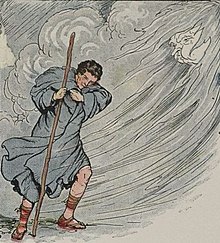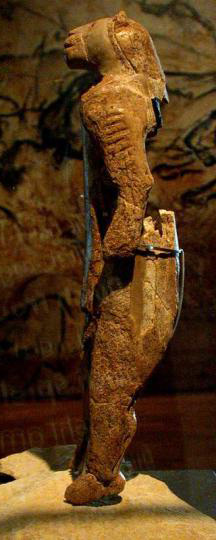
Back Vermensliking Afrikaans Anthropomorphismus ALS تجسيم Arabic Antropomorfizm Azerbaijani Антрапамарфізм Byelorussian Антрапамарфізм BE-X-OLD Антропоморфизъм Bulgarian নৃতাত্ত্বিকতা Bengali/Bangla Denheñvelegezh Breton Antropomorfisme Catalan


Anthropomorphism is the addition of human traits to something that is not a human. For example, the non-human might have human feelings, needs, and wants.[1] It is common for people to use anthropomorphism.[2]
Anthropomorphism is often used in stories and art. The story of the "Three Little Pigs" has a wolf and three pigs who talk and act like humans. Disney's Mickey Mouse also talks and acts like a human. An anthropomorphized animal is called a "furry".
The novel The Call of the Wild also uses anthropomorphism. The main character is a dog named Buck. Many other characters are dogs and wolves. In the story, the animals think and act more like humans than dogs.
- ↑ Oxford English Dictionary. "Anthropomorphism, n." Oxford University Press, 1885.
- ↑ Hutson, Matthew (2012). The 7 Laws of Magical Thinking: how irrational beliefs keep us happy, healthy, and sane. New York: Hudson Street Press. pp. 165–81. ISBN 978-1-101-55832-4.